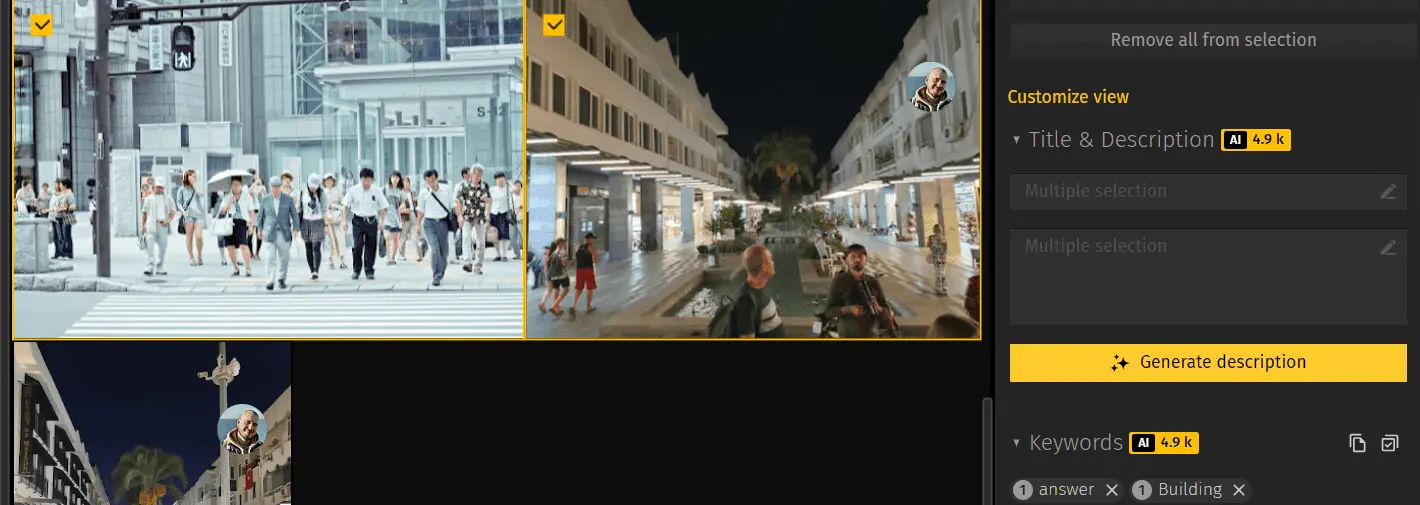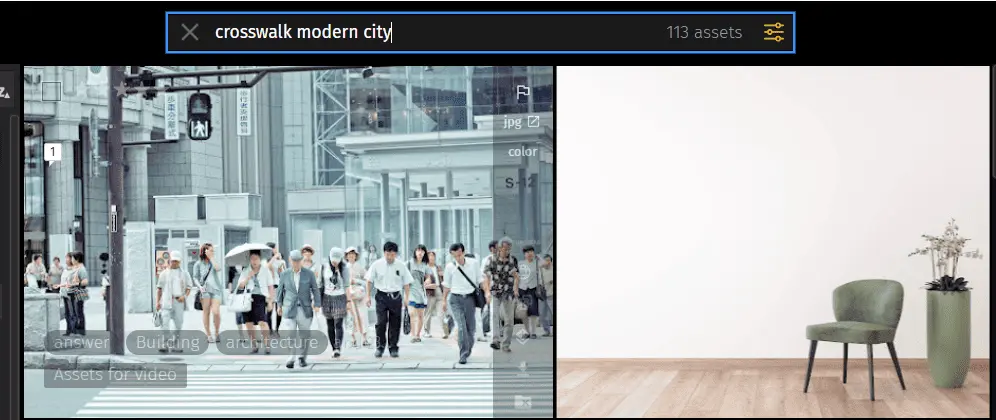In this article, you’ll learn:
During the past years, AI has leveled up digital asset management in many aspects. Such features as AI-powered face recognition, speech-to-text transcriptions, keyword tagging for images, and even file editing are all developing daily and save time for DAM users.
Pics.io digital asset management (DAM) decided to take AI automation even further. We’re introducing AI-generated descriptions for digital assets. Why? We’re explaining below.
Semantic Search in Digital Asset Management
The challenge for all DAM users is quick organization, search, and retrieval of all their files. Metadata plays an important role in all these processes. Just like tagged assets, assets with relevant descriptions, are more easily searchable and organized. To put it more simply, they are more informative and more usable.
In digital asset management, semantic search is an advanced search technique that provides more accurate and contextually relevant results. In other words, semantic search aims to improve search accuracy by understanding the meaning behind the words. It goes beyond keyword matching to grasp the context and intent of the search query.
Semantic search understands natural language, including long phrases and even sentences. That is why it takes search queries to a whole new level.
Here's how semantic search works:
- Natural Language Processing (NLP) analyzes the query's structure and context.
- Contextual Understanding
The technology interprets the intent behind the query. For example, a search for "red apple" will differentiate between the fruit and the tech company based on the query's context and additional words in the phrase.
- Relevant Results
By understanding the semantics, the system retrieves results that are contextually relevant rather than just those that match the keywords.
Semantic search provides a powerful search experience. In DAMs, for example, users can search using natural language to retrieve contextually relevant assets. It makes it easier to find exactly what they need and makes searches more intuitive and effective.
So far, so good. But, let's be honest. Creating relevant and usable asset descriptions takes time. And here’s when AI comes in handy.
AI-powered Asset Descriptions in DAMs
AI can automate many processes, and make them faster and easier. The same goes for creating relevant asset descriptions.
But why do we need asset descriptions in digital asset management? Keywords are not enough? Well, remember how we’ve been talking about semantic search earlier? The thing is that the more contextual information you can provide, the better search results you will get. Contextual information works as metadata here and adds one more level of information to your files. Therefore, semantic search technology has more relevant information to process and provide better search results.
Here comes the question of the quality of your asset descriptions. The need to be precise, relevant, and informative for efficient search.
Pics.io AI-powered descriptions use 2 different AI models so that you can choose which one will create better descriptions for your files. You can easily switch between them and even use embedded asset descriptions that were already in your files.
- GPT-4o - quick but can struggle with recognizing and processing celebrities or famous people.
- Pics.io-powered AI model - does not share data with third-party services.
To generate an asset description with AI, simply choose the necessary files in Pics.io library and click Generate description in Details panel to the right.

It’s also possible to create asset descriptions when you’re uploading them in Pics.io DAM.
Here’s how an image with an AI-generated asset description looks like. Users can also manually delete or edit descriptions if needed.

Now, you can easily search for this particular image with phrases and words from this description.

Benefits of AI-powered Asset Descriptions
If you’re still not sure why asset descriptions matter, here are some of their major advantages. These benefits show why having detailed and relevant asset descriptions is crucial for any business.
- Better Asset Organization
Detailed asset descriptions play a crucial role in organizing and managing digital assets effectively. By incorporating metadata such as keywords, tags, and categories, descriptions provide a structured way to catalog assets. This allows for efficient sorting and classification, enabling users to group similar items and improve asset retrieval.
Advanced search functionality is significantly enhanced through detailed descriptions. Moreover, well-described assets improve collaboration within teams, as all members can easily understand and find the resources they need, leading to a more efficient workflow and better project management.
- Better and Faster Search
Asset descriptions significantly speed up the search process for assets by providing detailed metadata that makes each asset easily identifiable. Descriptions include key information such as keywords, categories, and contextual details, which improve search accuracy.
- Less Manual Work - AI saves time on creating proper descriptions manually
Detailed asset descriptions boost the efficiency of locating digital assets and save considerable time. With well-structured descriptions, users spend less time sifting through irrelevant files and creating relevant descriptions themselves.
- Practical Use of Asset Descriptions
For e-commerce, for instance, these descriptions can become detailed and engaging product descriptions, saving significant time and effort for businesses. AI ensures consistency and quality across all product listings.
Moreover, AI-generated descriptions provide general information about an image, which can be useful for other users of a DAM system.
Conclusion
AI-generated asset descriptions save time by automating the creation of detailed and relevant metadata, as well as improves the accuracy of semantic search. Semantic search, which understands the context and intent behind queries, becomes even more effective with rich asset descriptions.
Did you enjoy this article? Give Pics.io a try — or book a demo with us, and we'll be happy to answer any of your questions.



